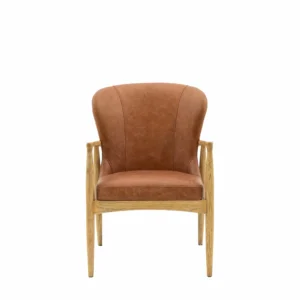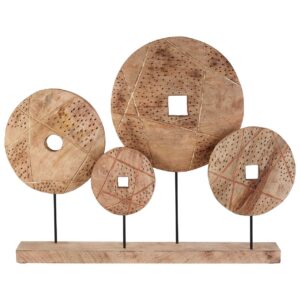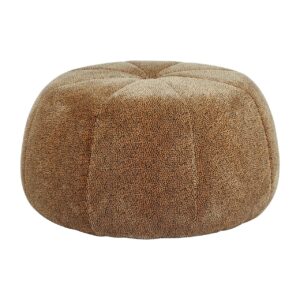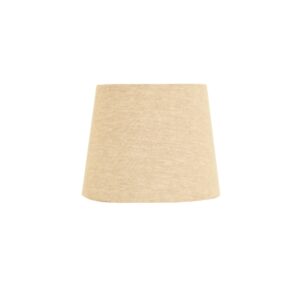In recent years, a captivating fusion of two distinct design traditions, Japanese and Scandinavian, has emerged as a prominent trend in the world of interior design. This harmonious blend, affectionately dubbed “Japandi,” marries the serene minimalism of Japanese aesthetics with the cozy functionality of Scandinavian design principles. Japandi style is not merely a juxtaposition of two cultures; it represents a thoughtful synthesis, where simplicity meets warmth, and functionality intertwines with elegance. In this article, we delve into the essence of Japandi design, unraveling its origins, exploring its key characteristics, and uncovering the reasons behind its widespread popularity. Join us on a journey to understand the allure of Japandi and discover how this captivating fusion has captured the hearts of design enthusiasts around the globe.

What is Japandi?
Japandi is a design style that blends elements of Japanese and Scandinavian aesthetics to create a harmonious and minimalist look. It combines the simplicity, minimalism, and functionality of Japanese design with the coziness, warmth, and natural elements of Scandinavian design. Japandi interiors typically feature clean lines, neutral color palettes, natural materials such as wood and bamboo, and a focus on creating balanced and serene spaces. The result is a timeless and sophisticated fusion that emphasizes simplicity, balance, and tranquility.
Japandi design is a fusion of Japanese and Scandinavian design styles, both of which are centered around simplicity, natural elements, and comfort. Japandi design combines the light, bright, and functional aspects of Scandinavian design with the warm, sophisticated elements of Japanese design. As a result, Japandi is minimalist, earthy, and organic. It also reflects the shared philosophies of the two cultures. The Scandinavian concept of hygge, or coziness, is about creating a home that is your sanctuary and provides a feeling of comfort every time you walk in the front door. The Japanese philosophy of wabi-sabi, which is about finding beauty within imperfection, is about embracing the natural flaws and signs of wear in objects and materials.
Other Words That Describes Japandi
A portmanteau of “Scandinavian” and “Japanese,” reflecting the fusion of these two design aesthetics.
- Nordic-Japanese Fusion: This term straightforwardly describes the blending of Nordic and Japanese design elements.
- Japanordic: Combining “Japan” and “Nordic,” this term highlights the amalgamation of Japanese and Scandinavian design influences.
- Scandijap: Similar to “Scandinese,” this term merges “Scandinavian” and “Japanese” to represent the fusion of these two design styles.
- Nordic Zen: This term emphasizes the tranquility and simplicity associated with both Nordic and Zen aesthetics, reflecting the calming atmosphere of Japandi interiors.
- Japanavian: This is not a commonly used term to describe the fusion of Japanese and Scandinavian design elements. While “Japanavian” may not be widely recognized, it could certainly be interpreted as a blend of “Japanese” and “Scandinavian,” akin to other terms like “Scandinese” or “Japanordic,” to represent this fusion design approach.

The History of the Japandi design.
Japandi design came to fruition when Scandinavian designers began traveling to Japan roughly 150 years ago, once borders became open and the country became accessible to tourists. The exchange of goods and ideas inspired both cultures to adopt elements from each other’s design styles.Japanese design has a rich history dating back centuries, characterized by principles such as simplicity, minimalism, and harmony with nature. Traditional Japanese architecture, such as temples and tea houses, emphasizes clean lines, natural materials, and an appreciation for space and tranquility. Japanese design principles have influenced various aspects of art, architecture, and lifestyle around the world, gaining recognition for their elegance and mindfulness.
Scandinavian design emerged in the early 20th century and encompasses a range of design principles and aesthetics originating from the Nordic countries, including Denmark, Sweden, Norway, Finland, and Iceland. . It emphasizes functionality, simplicity, and the use of natural materials, reflecting the region’s climate and lifestyle. Scandinavian design gained popularity internationally in the mid-20th century, with iconic designers such as Arne Jacobsen, Alvar Aalto, and Hans Wegner contributing to its global recognition.
The fusion of Japanese and Scandinavian design elements into what is now known as Japandi design emerged more recently as a response to the growing interest in minimalist and cozy interior aesthetics. As people sought to create tranquil and balanced living spaces, designers began blending the best of both Japanese and Scandinavian styles, resulting in the synthesis of Japandi design. Japandi design has gained momentum in the 21st century, propelled by its timeless appeal, emphasis on simplicity, and ability to create serene and inviting environments.

Key Elements of Japandi Design
Japandi design can be characterized by four main elements: minimalism, natural light, neutral colors, and natural materials.
Minimalism
Japandi design favors simplicity, and items in a space are intentional and serve a functional purpose. The lack of clutter encourages open space and clean lines that are either straight or curved. Furniture pieces are often designed with simple lines, neutral colors, and muted tones. Decorative items are handcrafted and made with terracotta, ceramic, stone, or glass. Less is more in Japandi design.
Natural Light
Natural light is essential in Japandi design because it is a way to bring the natural world into the living space. Bouncing sunlight off bright white walls and using large windows to let the light in are ways to incorporate light into the design. Natural light also enhances the colors and textures of the natural materials used in Japandi design.
Neutral Colors
Japandi design favors a neutral color scheme mimicking the natural world. Palettes typically include warm neutral tones, such as beige and tan, and cool neutrals, like gray or blue. Natural wood tones, green plants, and décor items with muted pastels can also add natural elements. The colors should convey a feeling of tranquility and calm; bold colors can be used as an accent but sparingly.
Natural Materials
A significant tenet of Japandi design is its focus on sustainability. Typically, furniture pieces are high-quality and display craftsmanship and timelessness. Every piece is intentionally chosen for the space and comprises natural materials, such as wood and bamboo, or natural textiles, such as rattan, linen, and cotton. Wood is especially prevalent in Japandi design, as it adds warmth and texture to the space. Both light wood (more Nordic) and dark wood (more Japanese) can be used in Japandi design.
The Aesthetics and Philosophy of Scandinavian and Japanese Design
In terms of aesthetics and philosophy, Japanese design and Scandinavian design share some similarities but also exhibit distinct differences:
- Minimalism and Simplicity:
Both Japanese and Scandinavian design embrace minimalism and simplicity, but they approach it in slightly different ways. Japanese minimalism tends to be more rooted in Zen philosophy, emphasizing emptiness (ma), imperfection (wabi-sabi), and the beauty of simplicity. Scandinavian minimalism, on the other hand, often focuses on clean lines, functionalism, and a sense of understated elegance. - Use of Natural Materials:
While both design styles incorporate natural materials such as wood, stone, and textiles, there are differences in how they are utilized. Japanese design often emphasizes the organic nature of materials, celebrating their natural imperfections and textures. Scandinavian design, meanwhile, may prioritize a smoother and more refined treatment of natural materials, often with an emphasis on light-colored woods and simple forms. - Emphasis on Nature:
Both Japanese and Scandinavian design are influenced by their respective relationships with nature, but they interpret this connection differently. Japanese design seeks to bring nature indoors through elements like indoor gardens (bonsai, ikebana) and views of nature (through windows or openings), fostering a sense of harmony with the natural world. Scandinavian design, while also valuing nature, often focuses on creating light-filled and airy spaces that celebrate the changing seasons and natural light. - Craftsmanship and Detail:
Japanese design places a strong emphasis on craftsmanship, attention to detail, and traditional techniques passed down through generations. This focus on craftsmanship can be seen in intricate joinery, handmade ceramics, and meticulous woodworking. Scandinavian design also values craftsmanship but may prioritize simplicity and functionality over ornate detailing, with a focus on quality and durability. - Philosophical Influences:
Japanese design is deeply influenced by Zen Buddhism and traditional Japanese aesthetics, which emphasize concepts such as impermanence, simplicity, and mindfulness. Scandinavian design, while rooted in similar principles of simplicity and functionality, may draw inspiration from broader Nordic values such as hygge (coziness), lagom (balance), and friluftsliv (appreciation of outdoor living).

Factors Contribute to the Rise of Japandi in Interior Design
Globalization and Cultural Exchange: Increased globalization and cultural exchange have facilitated the sharing of design ideas and aesthetics across borders. As people become more interconnected and exposed to different cultures, there’s a growing appreciation for the beauty and simplicity of Japanese and Scandinavian design.
Desire for Simplicity and Tranquility: In today’s fast-paced and hectic world, there’s a growing desire for simplicity, tranquility, and mindfulness in living spaces. Japandi design, with its emphasis on minimalism, clean lines, and harmonious aesthetics, offers a sanctuary from the chaos of modern life.
Blending of Cultural Influences: Japandi represents a fusion of two distinct design traditions, Japanese and Scandinavian, creating a style that is both familiar and novel. This blending of cultural influences resonates with people who appreciate the timeless elegance of Scandinavian design and the serene minimalism of Japanese aesthetics.
Focus on Sustainability and Natural Materials: Both Japanese and Scandinavian design prioritize sustainability and the use of natural materials. Japandi interiors often feature wood, bamboo, stone, and other eco-friendly materials, reflecting a growing awareness of environmental issues and a desire to create spaces that are both beautiful and sustainable.
Versatility and Adaptability: Japandi design is known for its versatility and adaptability to different spaces and lifestyles. Whether it’s a small apartment in the city or a spacious country home, Japandi aesthetics can be tailored to suit a variety of settings, making it accessible and appealing to a wide range of people.
Timeless Appeal and Enduring Aesthetics: Japandi design combines elements of Japanese and Scandinavian aesthetics, both of which have a timeless appeal and enduring elegance. By blending the best of these two design traditions, Japandi creates interiors that feel contemporary yet timeless, sophisticated yet inviting.
Design Style Similar to Japandi
- Scandinavian Design:
Scandinavian design, originating from the Nordic countries, shares many similarities with Japandi in its emphasis on minimalism, functionality, and natural materials. Both styles prioritize simplicity, clean lines, and creating cozy, inviting spaces. - Minimalist Design:
Minimalist design focuses on stripping down interiors to their essential elements, prioritizing simplicity, clarity, and functionality. Like Japandi, minimalist interiors often feature clean lines, neutral color palettes, and uncluttered spaces. - Hygge Style:
Hygge (pronounced “hoo-ga”) is a Danish concept that emphasizes coziness, comfort, and well-being. Hygge interiors often incorporate elements of Scandinavian design, with a focus on creating warm and inviting spaces that promote relaxation and contentment. - Zen Style:
Zen-inspired interiors draw inspiration from Japanese aesthetics and principles, emphasizing simplicity, mindfulness, and harmony with nature. Zen interiors often feature clean lines, natural materials, and a sense of tranquility, similar to Japandi design. - Wabi-Sabi Style:
Wabi-sabi is a Japanese aesthetic philosophy that celebrates the beauty of imperfection, impermanence, and authenticity. Wabi-sabi interiors embrace natural materials, weathered textures, and handmade objects, creating spaces that feel lived-in and soulful. - Modern Rustic Style:
Modern rustic design combines elements of contemporary design with the warmth and texture of rustic interiors. Like Japandi, modern rustic spaces often feature natural materials, neutral color palettes, and a blend of sleek and rustic furnishings.
While each of these styles has its unique characteristics and influences, they all share a common emphasis on simplicity, natural materials, and creating spaces that feel harmonious, balanced, and inviting.
How to Use Japandi Style in Your Home
- Start with a Neutral Base:
Paint walls in soft, neutral tones such as white, beige, or light grey to serve as a backdrop for the rest of the design. - Incorporate Natural Materials:
Choose furniture and décor made from natural materials like wood, bamboo, stone, and rattan. Opt for pieces with clean lines and simple forms to maintain a minimalist aesthetic.Incorporate natural fabrics (such as linen or cotton) and woven materials (such as rattan or jute) to add coziness and warmth to your space. Avoid overly ornate or intricate designs, and prioritize functionality and practicality. - Embrace Minimalist Furnishings:
Select furniture with clean lines and multifunctional designs. Look for pieces that prioritize functionality and practicality, such as platform beds with built-in storage or modular seating arrangements. - Focus on Texture and Contrast:
Introduce texture and visual interest through textiles like linen curtains, wool rugs, and cotton throw blankets. Mix and match textures to create depth while maintaining a cohesive color palette. - Balance Warmth and Serenity:
Add warmth to the space with touches of wood, such as a wooden coffee table or dining chairs. Balance the warmth with serene elements like light-colored upholstery or soft, neutral textiles. Create visual balance through symmetry, proportion, and careful placement of objects. - Maximize Natural Light:
Use sheer curtains or blinds to allow ample natural light to filter into the room. Position furniture to take advantage of natural light sources and create an airy, open feel. - Declutter and Simplify:
Practice mindful curation by decluttering surfaces and keeping accessories to a minimum. Choose a few statement pieces, such as a sculptural vase or a piece of artwork, to add personality without overwhelming the space. Select items with intention and purpose and focus on highlighting a few carefully chosen pieces - Create Zen-inspired Spaces:
Designate a meditation corner or zen-inspired area with a low platform seating or floor cushions, surrounded by plants and natural elements like pebbles or bamboo. - Introduce Greenery:
Incorporate plants and greenery to bring life and vitality to the space. Choose low-maintenance varieties like snake plants, pothos, or succulents to add a touch of nature without requiring much upkeep. - Personalize with Thoughtful Accents:
Personalize the space with thoughtful accents and décor that reflect your personality and interests. Display handmade ceramics, treasured books, or travel souvenirs on shelves or tabletops to add character and warmth. Incorporate subtle accents and textures to add visual interest and depth to the space. Introduce elements like woven textiles, ceramics, and plants to bring warmth and personality to the room.
The Japandi design offers a harmonious fusion of Japanese and Scandinavian design aesthetics, blending the timeless elegance of minimalism with the warmth of natural materials. With its emphasis on simplicity, functionality, and tranquility, Japandi creates inviting and serene interiors that celebrate the beauty of balance and harmony. As a versatile and timeless design approach, Japandi continues to captivate homeowners and design enthusiasts alike, offering a sanctuary of calmness and elegance in today’s bustling world.







